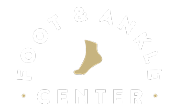What Are Common Foot Problems Associated With Aging?
Arthritis, Slow-Healing Foot Sores
One frequent companion is arthritis, bringing its old friend joint pain and stiffness, making each step a bit more challenging. Then there’s the slow-healing foot sores, a result of circulation taking its sweet time and skin deciding to thin out. Oh, and let’s not forget the unwelcome guests, bunions and hammertoes, sneaking in as our feet decide to change shape over the years.
Now, for my fellow almost fifty-somethings and onwards, prevention is the name of the game. Keep a close eye on those feet; a regular inspection can catch trouble before it starts. Treat your feet to comfy, supportive shoes. Trust me, they’ll thank you. Don’t forget to get those feet moving with some low-impact exercises. It keeps joints nimble and blood flowing.
And let’s not underestimate the power of good hygiene. A bit of washing and moisturizing can go a long way. Lastly, make pals with a podiatrist; regular check-ups can spot issues early. Invest in some quality foot care, because our well-worn feet deserve a little extra love as we age gracefully.
Reduced Blood Flow, Joint Pain
Unfortunately, aging can lead to a variety of common foot problems, ranging from reduced blood flow to joint pain and arthritis. These are all symptoms of reduced mobility, which is common when growing older.
Importantly, a reduction of movement can lead to further problems, such as corns and calluses, ingrown toenails or bunions, meaning prioritizing mobility is important to prevent additional problems.
One of the main ways seniors can avoid foot problems is by taking a proactive approach. This could be via investing in orthopedic mobility devices, such as riser and recliner chairs, regularly addressing any concerns with a podiatrist or participating in mobility-boosting exercises.
Some examples of seated exercises that may help can be found below:
1. Gentle Ankle Stretches: Either lie or sit down, bring your toes up towards your shin, and then point them toward the floor. Slowly repeat this movement five times for each ankle. This movement encourages flexibility and works to prevent foot pain and blood clots. As it can be performed lying down, you might consider incorporating it into your wake-up routine, getting your blood flowing to begin the day.
2. Hip Marches. Sitting upright on a chair and holding onto the sides for stability, lift your leg up with your knee bent as far as comfortably possible, and return it to a natural position in a controlled motion. Repeat this movement five times for both legs, and repeat the full set if you’re able to. This exercise will strengthen your hips and thighs, while boosting flexibility.
3. Chair Stands. Starting from a sitting position, keep your core tight, cross your arms across your chest, and come to a standing position by pushing your heels into the floor and squeezing your glutes as you reach full extension. When returning to a seated position, make sure you maintain a tight core whilst bending your knees. Try to repeat five times. Ideal for targeting lower body and core strength, chair stands will help to improve balance.
Staying active and performing low-impact exercises can both ease existing pain and, by encouraging proper blood flow, keep the body warm, which shouldn’t be underestimated as a means by which to stay safe and healthy over winter.
Dr. Snow Daws
Tendonitis, Neuroma
As we age, many changes can happen to the foot and ankle that result in foot and ankle pain or dysfunction. Joints can deteriorate and develop arthritis and deformities, such as bunions or flat feet, that can worsen and become more symptomatic. Tendons can become weak, less flexible and less able to repair themselves. Additionally, the fat pad on the bottom of the foot can diminish with age, which can cause increased pain with walking or other activities. Below are a few of the most common foot problems associated with aging.
Forefoot pain and deformity (bunions, metatarsalgia, hammertoes, corns, and calluses)
Bunions and other lesser toe deformities tend to worsen with age. This is related to hormonal changes as well as changes in elasticity and ligament stability that results from the aging process. Bunions are a widening of the forefoot and occur when the metatarsal bone shifts away from the foot and the big toe bends towards the lesser toes.
This can lead to hammertoe or claw toe deformities, which can make shoewear difficult and increase the risk for wounds and ulcerations. Metatarsalgia is pain in the ball of the foot that can be related to bunions, big toe arthritis, a tight calf muscle, or other reasons. Additionally, as the toes are pushed together and rub against each other, painful corns or calluses can develop.
Nonsurgical treatment for bunions and lesser toe pain and deformities includes wearing stiff soled and supportive shoes with a toe box that is wide enough to accommodate the toes. A stiff soled shoe with a mesh or elastic/stretchy upper is typically best. A calf stretching program and a metatarsal pad can be helpful for metatarsalgia. Orthotics or inserts are often used as well.
Arthritis
Arthritis is one of the most common reasons for foot and ankle pain in seniors. Foot and ankle arthritis is typically either wear and tear type arthritis with destruction of the cartilage of the joints in the foot and ankle from normal daily use or post-traumatic arthritis, meaning destruction of the cartilage from previous fracture or other traumatic injury. Foot and ankle arthritis can be associated with joint pain, swelling and decreased range of motion, as well as deformity and the development of bone spurs around the affected joints.
Conservative management for arthritis in the foot and ankle depends somewhat on what specific joints are affected. In general, we recommend staying as active as possible with low impact activity, wearing stiff soled and supportive shoe wear, and over the counter anti-inflammatories or acetaminophen. Custom or over-the-counter inserts are sometimes recommended for arthritis in specific joints. Additionally, steroid injections can be very helpful in the foot and ankle for pain relief.
Tendonitis/Tendon Injury
Tendons can lose elasticity and ability to repair themselves as part of the aging process. Seniors often present with chronic tendonitis or even tendon ruptures or tears. The most common tendons affected are the Achilles tendon (back of calf), posterior tibial tendon (arch tendon on the inside of ankle), anterior tibial tendon (tendon on the front of the ankle that helps pull the foot up), and peroneal tendons (tendons on the outside of the ankle that help with ankle stability).
Any concern for tendon rupture (feel a pop, sudden onset of weakness) should be immediately evaluated by a medical professional or orthopedic provider. Tendonitis or tendon injury is often treated to immobilization in a boot or other device for a period of time. Physical therapy is often an important part of the prevention and treatment process as well. Other preventative measures include ice or heat, anti-inflammatories or acetaminophen, inserts or orthotics, and keeping the surrounding muscles and joints strong and mobile.
Neuroma
A neuroma is a swelling of the nerve in the ball of the foot in between the metatarsal bones that can cause pain, numbness/tingling/burning and foot swelling. Neuromas are very common in all age groups, but can be worse in seniors due to decreased ball of foot fat pad.
Nonsurgical management of neuromas includes wearing shoes with a wide toe box so that toes are not scrunched together. Additionally, a neuroma pad can sometimes be added to the insert to offload the area of the neuroma. Steroid injections are also often used in the management of neuroma, as they are both therapeutic and diagnostic.
Plantar Fasciitis
The thick band of tissue on the bottom of the foot that extends from the forefoot to the heel is called the plantar fascia, and plantar fasciitis is the thickening and inflammation of this band where it inserts into the heel. Symptoms are typically worse when barefoot and with the first few steps in the morning.
Most patients with plantar fasciitis are started on a calf stretching protocol, as plantar fasciitis is often related to having a tight calf muscle. Other preventative options include inserts or orthotics, stiff soled and supportive shoes, offloading braces or heel cups, and physical therapy.
General recommendations for foot and ankle health, functional status, mobility and avoiding the need for surgery include:
-
– Maintaining a normal weight
– Management of chronic medical conditions to avoid complications that can impact the foot and ankle
– Good blood sugar control and avoiding complications related to diabetes
– Regular exercise and gentle stretching program to keep joints mobile
– Strength training to keep bones healthy and muscles strong and supportive
– Wearing proper footwear and orthotics or inserts if needed
– Most foot and ankle problems respond to stiff soled and supportive shoes
– Avoid going barefoot
This is a crowdsourced article. Contributors' statements do not necessarily reflect the opinion of this website, other people, businesses, or other contributors.


